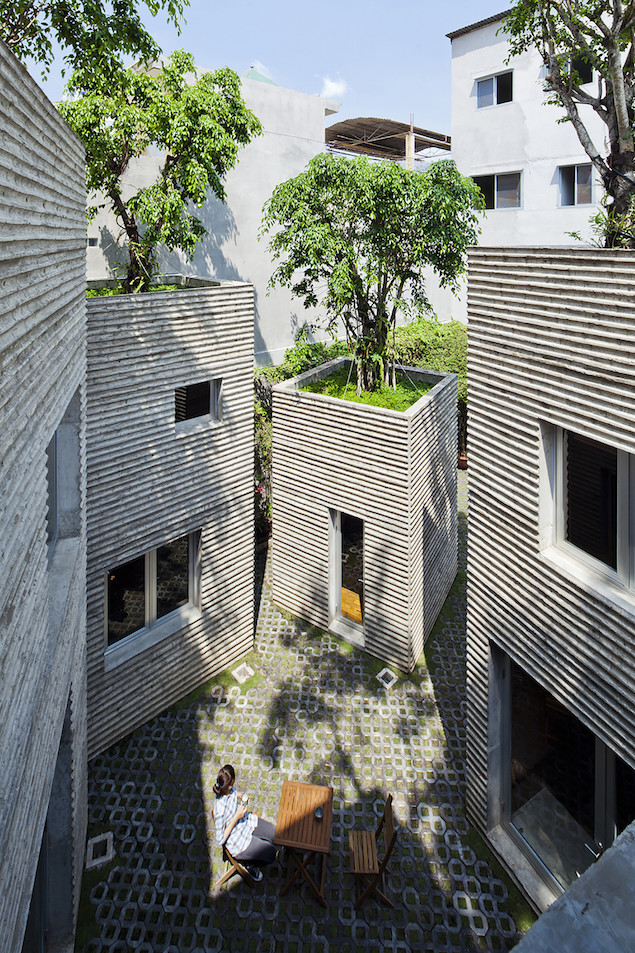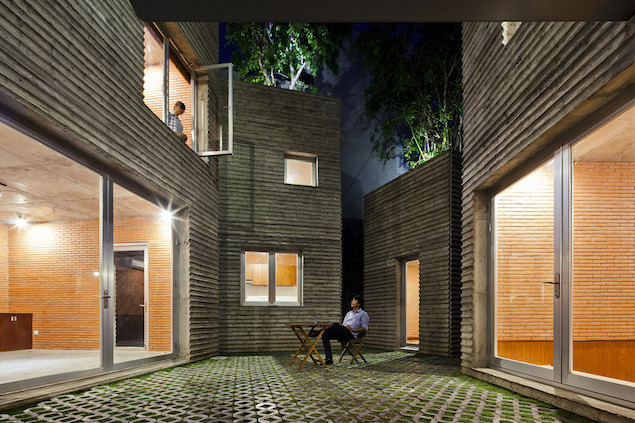A multisensory coffee for the tea ceremony
Taking over the ground and first floors of a modern low-rise in Osaka, Tokyo-based studio I IN has created a coffee shop that is futuristic,…
That is the aim of the “House for trees” project developed by Vietnamese agency, Vo Trong Nghia Architects. Indeed, in Ho Chi Minh City, the capital of Vietnam, only 0.25% of the entire city is covered by greenery. This poses a number a problems, such as air pollution as well as having an impact on the health of inhabitants. It was therefore time to come up new solutions including in the design of buildings.
This is a concept tested by the agency, Vo Trong Nghia Architects. This project, with a budget of 156,000 USD, consists of five houses that represent “pots” for tropical trees that are planted on their tops. Trees are one of the main mechanisms of CO2 absorption thanks to photosynthesis so that would improve the quality of the air in the city in the long term. The vast amounts of soil in these pots, located on the roofs of the houses, also absorb some of the water that falls during tropical storms that affect the city. This could solve, or at least improve, some of the flooding problems related to these situations if the project were extended on a larger scale.

Materials are sourced locally to reduce the project’s carbon footprint: bamboo for the outside and bricks for the internal walls. A cavity has been left between these two materials to promote natural ventilation and to maintain a cool temperature inside.
The five houses are arranged around a central common space, serving as a courtyard where people can meet up. The houses have large windows that open onto this space, blurring boundaries between inside and outside, as you find in countries with tropical climates. The study and dining-room are located on the ground floor, while the first floor accommodates the bedrooms and bathroom.

This project was the winner of the Architectural Review Awards in 2014 in the “house” category.
“Greener” buildings to address pollution in cities – what do you think?